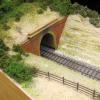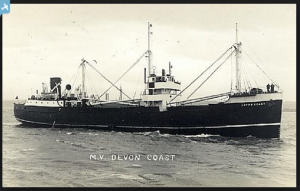spw050804 SCOTLAND (1936). Ardrossan Old Dock and South Bay, Ardrossan. An oblique aerial photograph taken facing east.
© Copyright OpenStreetMap contributors and licensed by the OpenStreetMap Foundation. 2024. Cartography is licensed as CC BY-SA.
Nearby Images (25)
Details
| Title | [SPW050804] Ardrossan Old Dock and South Bay, Ardrossan. An oblique aerial photograph taken facing east. |
| Reference | SPW050804 |
| Date | 1936 |
| Link | Canmore Collection item 1257823 |
| Place name | |
| Parish | ARDROSSAN |
| District | CUNNINGHAME |
| Country | SCOTLAND |
| Easting / Northing | 222479, 642038 |
| Longitude / Latitude | -4.8208418048589, 55.639423140164 |
| National Grid Reference | NS225420 |
Pins
 Billy Turner |
Thursday 17th of December 2015 06:20:47 PM | |
 MB |
Monday 27th of January 2014 03:00:37 PM | |
 MB |
Monday 27th of January 2014 02:59:20 PM | |
 MB |
Monday 27th of January 2014 02:58:41 PM | |
 MB |
Monday 27th of January 2014 02:57:26 PM | |
 MB |
Monday 27th of January 2014 02:54:05 PM | |
Nearly all vehicles had been common user since the 1914-18 war, so it is surprising that there are not more non LMS or (L) NE (R) wagons to be seen. ... After all they do have wheels on, so they tend to move about! |
 Maurice |
Monday 27th of January 2014 03:46:55 PM |
Thanks for enlightening me, Maurice. That being the case, where would such wagons be maintained - would the GW vehicles find their way back to GW metals, or would they receive repairs anywhere on the railway network? Why bother to distinguish between GW, LMS and LNER, by large lettering on the sides of the vans, etc? |
 MB |
Monday 27th of January 2014 10:42:00 PM |
Unless specially marked any wagon would be assumed to be such. When a 'common user' wagon wandered onto another company's rails they were permitted to retain the 'foreign' wagon and use it as required. The Railways Clearing House (RCH) then determined any payment to be made to the parent company. Every now and again a rake of empty wagons might be formed and returned to the parent company but in general the stock remained in a fair balance. The common user system reduced the empty wagon mileage from 60% of the total before the war to only 20% of the total by 1918. This was self evidently a commercial success and the scheme remained in operation right up to the nationalisation of the railways after the Second World War. Companies would reserve any special stock for their own use, but there were variations in what the companies considered special. For example the LMS, LNER and SR pooled their cattle wagons under the RCH 'common user' scheme in 1927, the GWR however did not place their cattle wagons in the pool. More specialised livestock vehicles, such as horse boxes, were not pooled by any of the companies and other specialised rolling stock such as grain hoppers, banana vans and fruit vans would also be reserved. These `non common user' vehicles were marked as such and had to be returned to the parent company as soon as possible after unloading, fees being paid if they were retained. Railway company owned tarpaulin sheets were brought into the Common User scheme in about 1917. In the main they would stay with a particular wagon but it would be possible to see for example an LNER wagon sheet draped over an LMS wagon. Sheets were easier to return than wagons however, so this would not have been common. The pooling of railway company stock was such an evident success that a common user pool was also established for private owner vehicles. The wagons belonging to the pool were clearly marked as such and the RCH determined any payments required for the use of a pooled wagon. The private owner pool markings were common from the 1920's until the Second World War. The above reproduced from http://myweb.tiscali.co.uk/gansg/1-hist/hist-c.htm |
 cbrndc |
Thursday 18th of August 2016 06:36:20 AM |
 MB |
Monday 27th of January 2014 02:53:05 PM | |
 MB |
Monday 27th of January 2014 02:51:55 PM | |
 MB |
Monday 27th of January 2014 02:50:52 PM | |
 MB |
Monday 27th of January 2014 02:50:13 PM | |
 MB |
Monday 27th of January 2014 02:48:51 PM | |
Had been launched here on 30/5/1936 for Coast Lines Ltd. |
 mannidaze |
Thursday 11th of September 2014 11:21:59 PM |


![[SPW050801] Ardrossan Old Dock and Breakwater, Ardrossan. An oblique aerial photograph taken facing north.](http://britainfromabove.org.uk/sites/all/libraries/aerofilms-images/public/100x100/SPW/050/SPW050801.jpg)
![[SPW050803] Ardrossan Harbour. An oblique aerial photograph taken facing north-east.](http://britainfromabove.org.uk/sites/all/libraries/aerofilms-images/public/100x100/SPW/050/SPW050803.jpg)
![[SPW050804] Ardrossan Old Dock and South Bay, Ardrossan. An oblique aerial photograph taken facing east.](http://britainfromabove.org.uk/sites/all/libraries/aerofilms-images/public/100x100/SPW/050/SPW050804.jpg)
![[SPW056870] Ardrossan Harbour and Refinery. An oblique aerial photograph taken facing north. This image has been produced from a print.](http://britainfromabove.org.uk/sites/all/libraries/aerofilms-images/public/100x100/SPW/056/SPW056870.jpg)
![[SAR018740] General View Ardrossan, Ayrshire, Scotland. An oblique aerial photograph taken facing South.](http://britainfromabove.org.uk/sites/all/libraries/aerofilms-images/public/100x100/SAR/018/SAR018740.jpg)
![[SPW056896] Ardrossan Harbour. An oblique aerial photograph taken facing east.](http://britainfromabove.org.uk/sites/all/libraries/aerofilms-images/public/100x100/SPW/056/SPW056896.jpg)
![[SPW050815] Outer Harbour and Winton Pier, Ardrossan. An oblique aerial photograph taken facing west.](http://britainfromabove.org.uk/sites/all/libraries/aerofilms-images/public/100x100/SPW/050/SPW050815.jpg)
![[SPW056866] Ardrossan Harbour. An oblique aerial photograph taken facing north.](http://britainfromabove.org.uk/sites/all/libraries/aerofilms-images/public/100x100/SPW/056/SPW056866.jpg)
![[SPW019561] Ardrossan Harbour. An oblique aerial photograph taken facing east. This image has been produced from a print.](http://britainfromabove.org.uk/sites/all/libraries/aerofilms-images/public/100x100/SPW/019/SPW019561.jpg)
![[SPW050789] Ardrossan Harbour. An oblique aerial photograph taken facing east.](http://britainfromabove.org.uk/sites/all/libraries/aerofilms-images/public/100x100/SPW/050/SPW050789.jpg)
![[SPW050806] Ardrossan Harbour. An oblique aerial photograph taken facing south-east.](http://britainfromabove.org.uk/sites/all/libraries/aerofilms-images/public/100x100/SPW/050/SPW050806.jpg)
![[SPW050795] Inner and Outer Harbours and Winton Pier, Ardrossan. An oblique aerial photograph taken facing south-east.](http://britainfromabove.org.uk/sites/all/libraries/aerofilms-images/public/100x100/SPW/050/SPW050795.jpg)
![[SPW050798] Outer Harbour and Winton Pier, Ardrossan. An oblique aerial photograph taken facing west.](http://britainfromabove.org.uk/sites/all/libraries/aerofilms-images/public/100x100/SPW/050/SPW050798.jpg)
![[SPW056871] Ardrossan, general view, showing Ardrossan Harbour and Castle Hill. An oblique aerial photograph taken facing east. This image has been produced from a print.](http://britainfromabove.org.uk/sites/all/libraries/aerofilms-images/public/100x100/SPW/056/SPW056871.jpg)
![[SPW049054] Inner and Outer Harbours and Montgomerie Pier, Ardrossan. An oblique aerial photograph taken facing east.](http://britainfromabove.org.uk/sites/all/libraries/aerofilms-images/public/100x100/SPW/049/SPW049054.jpg)
![[SPW049055] Ardrossan, general view, showing Ardrossan Harbour and South Bay. An oblique aerial photograph taken facing east.](http://britainfromabove.org.uk/sites/all/libraries/aerofilms-images/public/100x100/SPW/049/SPW049055.jpg)
![[SPW049056] Ardrossan Harbour. An oblique aerial photograph taken facing south.](http://britainfromabove.org.uk/sites/all/libraries/aerofilms-images/public/100x100/SPW/049/SPW049056.jpg)
![[SPW049057] Ardrossan, general view, showing Ardrossan Harbour and South Bay. An oblique aerial photograph taken facing south-east.](http://britainfromabove.org.uk/sites/all/libraries/aerofilms-images/public/100x100/SPW/049/SPW049057.jpg)
![[SPW050793] Ardrossan Harbour and South Bay, Ardrossan. An oblique aerial photograph taken facing east.](http://britainfromabove.org.uk/sites/all/libraries/aerofilms-images/public/100x100/SPW/050/SPW050793.jpg)
![[SPW056869] Ardrossan, general view, showing Ardrossan Harbour and South Bay. An oblique aerial photograph taken facing south-east. This image has been produced from a print.](http://britainfromabove.org.uk/sites/all/libraries/aerofilms-images/public/100x100/SPW/056/SPW056869.jpg)
![[SPW050788] Ardrossan Harbour and South Bay, Ardrossan. An oblique aerial photograph taken facing east.](http://britainfromabove.org.uk/sites/all/libraries/aerofilms-images/public/100x100/SPW/050/SPW050788.jpg)
![[SPW050796] Inner Harbour and Montgomerie Pier, Ardrossan. An oblique aerial photograph taken facing north.](http://britainfromabove.org.uk/sites/all/libraries/aerofilms-images/public/100x100/SPW/050/SPW050796.jpg)
![[SPW050799] Ardrossan Harbour. An oblique aerial photograph taken facing west.](http://britainfromabove.org.uk/sites/all/libraries/aerofilms-images/public/100x100/SPW/050/SPW050799.jpg)
![[SPW050809] Inner Harbour and Ardrossan Refinery, Ardrossan. An oblique aerial photograph taken facing north.](http://britainfromabove.org.uk/sites/all/libraries/aerofilms-images/public/100x100/SPW/050/SPW050809.jpg)
![[SPW050805] South Pier and Breakwater, Ardrossan. An oblique aerial photograph taken facing north.](http://britainfromabove.org.uk/sites/all/libraries/aerofilms-images/public/100x100/SPW/050/SPW050805.jpg)





